Case Studies
-
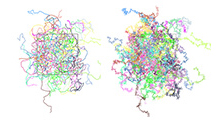
- Construction of amorphous strucuture using reverse-mapping
- Efficient creation of relaxation structures for long-chain polymer models
Full Atomistic MD Coarse Grained MD Molecular structure / Affinity / SolubilityMaterials Science
-
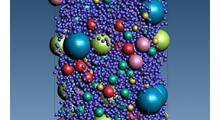
- Calculation of pressure and porosity in the forming process (calendaring) of battery electrodes
- Compression and elongation simulation of solid (powder) layer by particle method (DEM)
Other methods Other Properties Materials Science
-
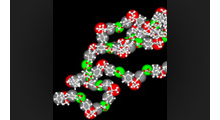
- Analysis of birefringence using coarse-grained molecular dynamics
- Coarse-grained molecular dynamics and reverse mapping to evaluate birefringence
FAMD / CGMD Optical / Electrical / Magnetic Materials Science
-
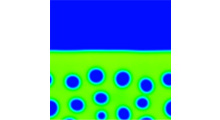
- Simulation of phase separation process in polymeric membranes
- Evaluation of the NIPS (Non-Solvent Induced Phase Separation) process using mean-field model
DPD / Mean Field Interface / Phase Separation / Particle Dispersion Materials Science
-
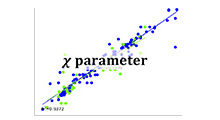
- Estimation of the χ parameter by machine learning
- Creating features from descriptors of two molecules and learning the relationship with the interaction parameter chi;
Data Science Molecular structure / Affinity / Solubility Materials Materials Science Life Science
-
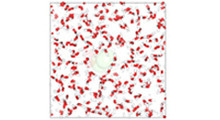
- Solubility for water
- Evaluation of solvation free energy by Free Energy Perturbation method
Full Atomistic MD Molecular structure / Affinity / Solubility Materials Materials Science Life Science
-
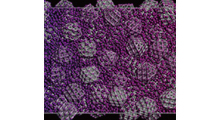
- Thermal conductivity calculations for filler resin composites
- Heat conduction simulation using Particle method
Continuum model Thermal Materials Science
-
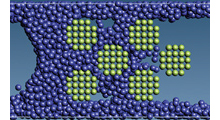
- Resin impregnation process calculation for fiber structure by VSOP-PS
- Process simulation using Particle method
Continuum model Other Properties Materials Science
-
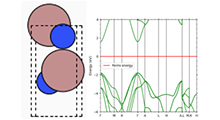
- Analysis example of semiconductor band gap correction by LDA+U method
- Analysis of semiconductor band structure with high accuracy using SIESTA
Quantum Chemistry / DFT Optical / Electrical / Magnetic Materials Science
-
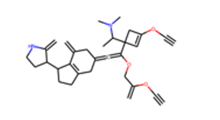
- Inverse analysis of QSPR using mol-infer
- Prediction of molecular structure from physical properties
Data Science Mechanical / Viscosity / ViscoelasticityThermalSmall molecule penetration / diffusion / adsorptionOptical / Electrical / MagneticInterface / Phase Separation / Particle DispersionMolecular structure / Affinity / SolubilityOther Properties Materials ScienceLife Science
-
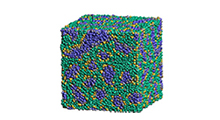
- Phase-separated structure of polyelectrolyte using FMO-DPD
- Prediction of χ parameters with FCEWS, and Mesoscale analysis of polymer electrolytes used in fuel cells
Quantum Chemistry / DFTDPD / Mean FieldMultiscale Analysis Interface / Phase Separation / Particle Dispersion Materials Science
-
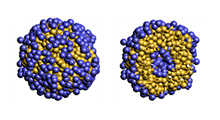
- Formation of lipid bilayers and vesicles using FMO-DPD
- Prediction of χ parameters with FCEWS, and Mesoscale analysis of phospholipids
Quantum Chemistry / DFTDPD / Mean FieldMultiscale Analysis Interface / Phase Separation / Particle Dispersion Life Science
-
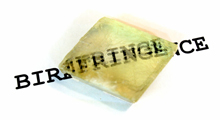
- Birefringence and optical absorption of calcite
- Targeting optical elements such as polarizers, properties of calcite were analyzed.
Quantum Chemistry / DFT Optical / Electrical / Magnetic Materials Science
-
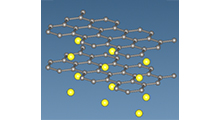
- Lithium-ion batteries Graphite anode swelling
- Evaluation of Li ion insertion into graphite anode using SIESTA
Quantum Chemistry / DFT Mechanical / Viscosity / ViscoelasticityOptical / Electrical / Magnetic Materials Science
-
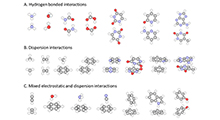
- Evaluation of van der Waals Functionals of SIESTA
- Test results of VDW functionals implemented in SIESTA
Quantum Chemistry / DFT Molecular structure / Affinity / Solubility Materials ScienceLife Science
-
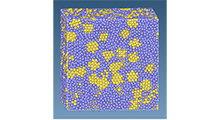
- Viscosity of the suspension
- Fluid analysis of filler dispersion systems using the particle method (MPS).
Continuum Model Mechanical / Viscosity / ViscoelasticityInterface / Phase Separation / Particle Dispersion Materials ScienceLife Science
-
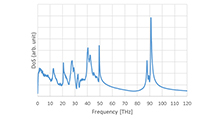
- Evaluation of the specific heat with quantum corrections
- Specific heat at constant volume is evaluated with higher accuracy.
Full Atomistic MD Thermal Materials Science
-
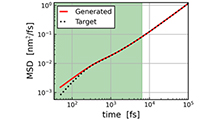
- Prediction of Long-Time Molecular Motions Using MD-GAN
- Based on the results of short-time MD calculations, MD-GAN (machine learning) is used to predict long-time molecular motions and evaluate diffusion phenomena.
Data Science Small molecule penetration / diffusion / adsorption Materials ScienceLife Science
-
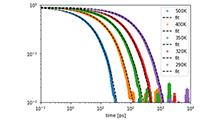
- Dielectric relaxation of polymers
- Dielectric relaxation of polymers are calculated using MD.
Full Atomistic MD Optical / Electrical / Magnetic Materials Science
-
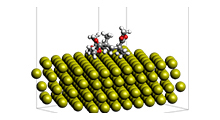
- Molecular level adhesion
- Evaluation of the interaction between resin and metal during adhesion using SIESTA
Quantum Chemistry / DFT Mechanical / Viscosity / ViscoelasticityInterface / Phase Separation / Particle Dispersion Materials Science
-
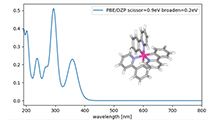
- Absorption spectrum of metal complex
- Evaluation of optical properties of metal complexes using SIESTA
Quantum Chemistry / DFT Optical / Electrical / Magnetic Materials Science
-
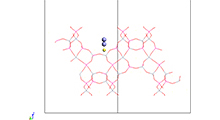
- Interaction between zeolite and gas molecules
- Analysis of Zeolite Behavior as a Gas Molecular Adsorbent Using SIESTA
Quantum Chemistry / DFT Small molecule penetration / diffusion / adsorption Materials Science
-
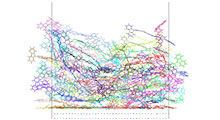
- Simulation of the deposition of film
- MD Simulation of Deposited Films Targeting OLED
Full Atomistic MD Interface / Phase Separation / Particle Dispersion Materials Science
-
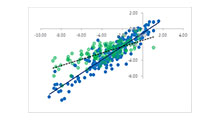
- Machine Learning QSPR and Materials Informatics
- Quantitative structure-property relationship using Deep Learning
Data Science Mechanical / Viscosity / ViscoelasticityThermalSmall molecule penetration / diffusion / adsorptionOptical / Electrical / MagneticInterface / Phase Separation / Particle DispersionMolecular structure / Affinity / SolubilityOther Properties Materials Science
-
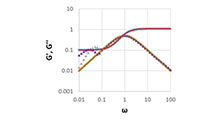
- Conversion from relaxation modulus to dynamic modulus
- i-Rheo GT converts relaxation modulus to dynamic modulus.
Other methods Mechanical / Viscosity / Viscoelasticity Materials Science
-
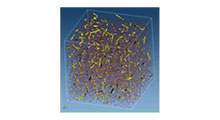
- DPD Simulation Considering the Entanglement Effect of Polymers
- Calculating the surface structure of Si and SiO2 using ab initio MD
DPD / Mean FieldReptation Dynamics Mechanical / Viscosity / Viscoelasticity Materials Science
-
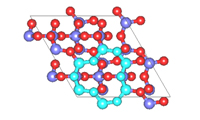
- Surface Reconstruction
- Calculating the surface structure of Si and SiO2 using ab initio MD
Quantum Chemistry / DFT Interface / Phase Separation / Particle Dispersion Materials Science
-
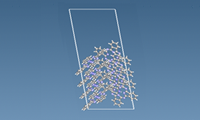
- Surface Energy of Pigments
- Surface Energy Evaluation of Pigments by SIESTA
Quantum Chemistry / DFT Interface / Phase Separation / Particle Dispersion Materials Science
-
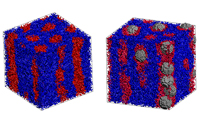
- Material properties of phase-separated structures of block copolymer-nanoparticle composites
- Importing structures calculated by DPD into Digimat-FE
DPD / Mean FieldContinuum ModelMultiscale Analysis ThermalInterface / Phase Separation / Particle Dispersion Materials Science
-
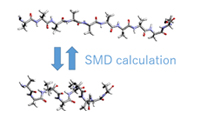
- Free energy change of polypeptides by Steered MD
- Analysis of the free energy change along the reaction coordinate
Full Atomistic MD Molecular structure / Affinity / Solubility Life Science
-
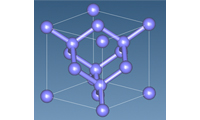
- Derivation of the stiffness matrix using phonon dispersion curves
- The elastic properties of a material can be completely described by a stiffness matrix. Each element of the stiffness matrix can be obtained from the phonon dispersion curves obtained by using first-principles calculations.
Quantum Chemistry / DFT Mechanical / Viscosity / Viscoelasticity Materials Science
-
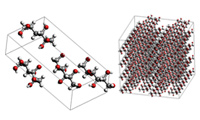
- Evaluation of Heat Storage Materials with J-OCTA
- Calculating the Latent Heat of Melting of Sugar Alcohols
Full Atomistic MD Thermal Materials Science
-
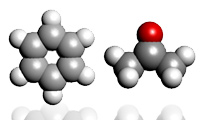
- Evaluation of Relative Permittivity Using MD and MO/DFT
- Estimation of the relative permittivity of various molecules
Quantum Chemistry / DFTFull Atomistic MD Optical / Electrical / Magnetic Materials Science
-
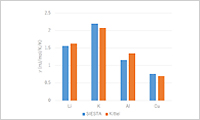
- Electronic specific heat analysis of metals
- Density of states of metals and specific heat capacity per mole of electrons and electron specific heat coefficient calculation examples
Quantum Chemistry / DFT Thermal Materials Science
-
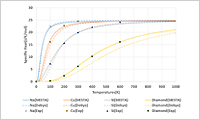
- Simulation of lattice specific heat
- An example of obtaining specific heat characteristics reflecting the characteristics of each material by first-principles calculations
Quantum Chemistry / DFT Thermal Materials Science
-
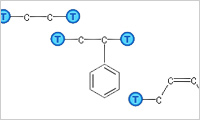
- Calculation of solubility coefficient
- J-OCTA's solubility module calculates the solubility coefficient from the value of excess chemical potential.
Other methods Small molecule penetration / diffusion / adsorption Materials Science
-
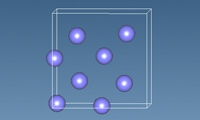
- Evaluation of mechanical properties
- Evaluation of various mechanical properties of Si crystals
Quantum Chemistry / DFT Mechanical / Viscosity / Viscoelasticity Materials Science
-
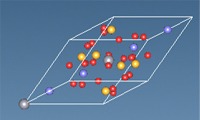
- Thermal expansion of crystals
- SIESTA analyzes temperature changes in crystal cell volume due to potassium and KZP
Quantum Chemistry / DFT Thermal Materials Science
-
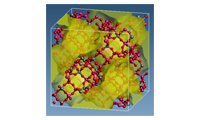
- Gas adsorption on zeolite
- Calculation of adsorption isotherm of CO2 molecule on NaY zeolite
Full Atomistic MD Small molecule penetration / diffusion / adsorption Materials Science
-
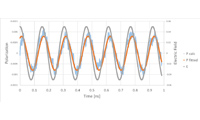
- Dielectric dispersion of water in the GHz frequency range (2)
- Evaluation of complex permittivity using external electric field
Full Atomistic MD Optical / Electrical / Magnetic Materials Science
-
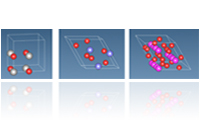
- Formation energy of reaction
- Evaluation of energy change of oxidation reaction
Quantum Chemistry / DFT Other Properties Materials Science
-
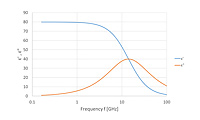
- Dielectric dispersion of water in the GHz frequency range
- We evaluated the dielectric dispersion of water using...
Full Atomistic MD Optical / Electrical / Magnetic Materials Science
-
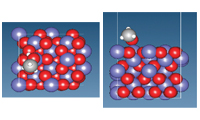
- The adsorption energy of molecules on solid surfaces
- Evaluation of adsorption energy of molecules on Au (111) surface and α-alumina surface
Quantum Chemistry / DFT Small molecule penetration / diffusion / adsorptionInterface / Phase Separation / Particle Dispersion Materials Science
-
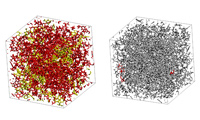
- Cross-Linking of Epoxy Resin by the Monte Carlo method using activation energy
- Creating cross-linked structures and evaluating mechanical properties using VSOP
Quantum Chemistry / DFTFull Atomistic MDMultiscale Analysis Mechanical / Viscosity / Viscoelasticity Materials Science
-
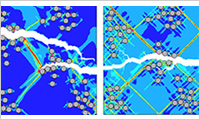
- Fracture of CFRTP / Interface
- We evaluated the effect of the interfacial property for different CFRTP fiber dispersion structures.
Coarse Grained MDContinuum ModelMultiscale Analysis Mechanical / Viscosity / ViscoelasticityInterface / Phase Separation / Particle Dispersion Materials Science
-
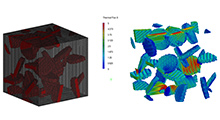
- Thermal analysis which considers the dispersibility of graphene sheets
- Modification of thermal conductivity of CFRTP matrix by adding graphene sheets by using J-OCTA and Digimat.
DPD / Mean FieldContinuum ModelMultiscale Analysis ThermalInterface / Phase Separation / Particle Dispersion Materials Science
-
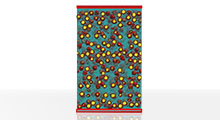
- Slurry Coating Process
- To improve the performance of fuel cells and lithium-ion batteries, Toyota Motor Corporation has conducted a coarse-grained
Coarse Grained MD ThermalOptical / Electrical / MagneticInterface / Phase Separation / Particle DispersionOther Properties Materials Science
-
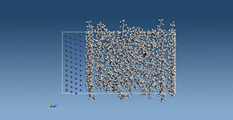
- Example of Calculation with SIESTA
- Below is an energy curve showing the energy curve of interaction between copper and alkane molecules obtained using
Quantum Chemistry / DFTFull Atomistic MDMultiscale Analysis Small molecule penetration / diffusion / adsorptionInterface / Phase Separation / Particle Dispersion Materials Science
-
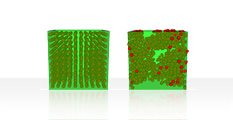
- Cyclic Deformation of Filled Rubber
- This case example is for evaluating the relationship between the dispersed structure and the macro mechanical property of
Coarse Grained MD Mechanical / Viscosity / ViscoelasticityInterface / Phase Separation / Particle Dispersion Materials Science
-
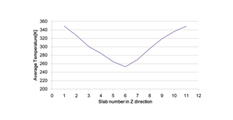
- Evaluation of Thermal Conductivity by Using Non-Equilibrium MD
- Thermal conductivity of water, epoxy resin and PMMA was evaluated by a series of VSOP
Full Atomistic MD Thermal Materials Science
-
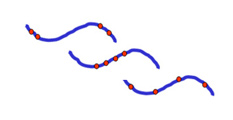
- Rheology Simulation of Rubber
- Dynamic viscoelastic properties of cross-linked poly-isoprene was calculated by using Primitive Chain Network model (NAPLES of OCTA).
Reptation Dynamics Mechanical / Viscosity / Viscoelasticity Materials Science
-
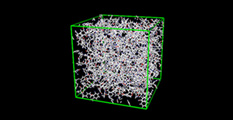
- Properties of Cross-Linked Phenolic Resins
- Structure-property relationships of cross-linked phenolic resins have been studied by using atomistic molecular dynamics simulations
Full Atomistic MD Mechanical / Viscosity / Viscoelasticity Materials Science
-
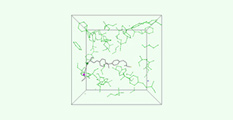
- Simulation of Crosslinked Epoxy Resin
- Curing reaction of Epoxy resin is simulated using the functions of J-OCTA. Bisphenol A epoxy resin and ethylenediamine are target molecules
Full Atomistic MD Thermal Materials Science
-
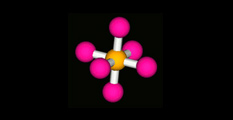
- Calculation of Li-Ion Battery Electrolyte
- Li-Ion Battery electrolyte is simulated by using J-OCTA's modeling functions and molecular dynamics engines (COGNAC and VSOP).
Full Atomistic MD Small molecule penetration / diffusion / adsorption Materials Science
-
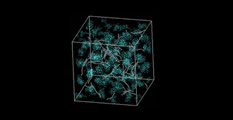
- Dispersed Structure and Nonlinear Structural Analysis of Carbon Nanotubes
- A simulation of the dispersed structure of carbon nanotubes (CNT) in microphase separation
DPD / Mean FieldContinuum ModelMultiscale Analysis Mechanical / Viscosity / ViscoelasticityInterface / Phase Separation / Particle Dispersion Materials Science
-
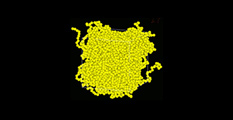
- Evaluation of Coarse Grained Potential
- The Coarse Grained Molecular Dynamics of polybutadiene were conducted. The Coarse Grained Potential was estimated by using
Full Atomistic MDCoarse Grained MDMultiscale Analysis Other Properties Materials Science
-
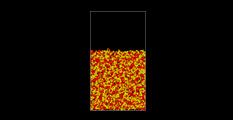
- Simulation of Solvent Evaporation Using DPD
- A simulation of polymer phase separation associated with solvent evaporation
DPD / Mean Field Interface / Phase Separation / Particle Dispersion Materials Science
-
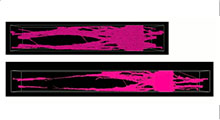
- Uniaxial Elongation and Craze Growth in Glassy Polymers
- A simulation of craze growth in glassy polymers during uniaxial elongation was conducted by using the molecular dynamics engines
Coarse Grained MD Mechanical / Viscosity / Viscoelasticity Materials Science
-
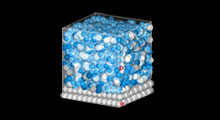
- Polymer/Solid Interface Friction
- Friction between amorphous polyethylene (PE) and a graphite wall have been calculated using full atomistic molecular dynamics.
Full Atomistic MD Mechanical / Viscosity / ViscoelasticityInterface / Phase Separation / Particle Dispersion Materials Science
-
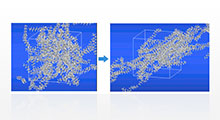
- Evaluation of Viscosity by Using MD
- Viscosity can be evaluated through calculation of shear deformation using Lees-Edwards boundary conditions
Full Atomistic MD Mechanical / Viscosity / Viscoelasticity Materials Science
-
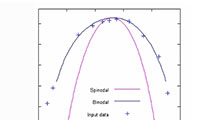
- Estimation of χ Parameters from Phase Diagrams
- We estimated the χ parameter using the Flory-Huggins theory and cloud point data?[1]?from PS/PB miscible
Other methods Interface / Phase Separation / Particle Dispersion Materials Science
-

- Polymer/Solid Interface Peeling
- Delamination between amorphous polyethylene (PE) and a graphite wall have been calculated using full atomistic molecular dynamics
Full Atomistic MD Mechanical / Viscosity / ViscoelasticityInterface / Phase Separation / Particle Dispersion Materials Science
-

- Gas Solubility Coefficient and Free Volume
- The permeability coefficient P derived from the gas permeability (gas barrier properties) of polymer material are evaluated by multiplying
Full Atomistic MDOther methods Small molecule penetration / diffusion / adsorption Materials Science
-
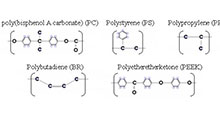
- Estimation of Property Values Using QSPR
- By using Quantitative Structure-Property Relationships (QPSR), we can estimate the physical property values of the polymer
Data Science Mechanical / Viscosity / ViscoelasticityThermalSmall molecule penetration / diffusion / adsorptionOptical / Electrical / MagneticInterface / Phase Separation / Particle DispersionMolecular structure / Affinity / SolubilityOther Properties Materials Science
-
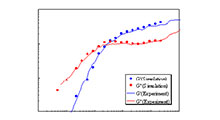
- Rheological Characteristics
- By performing coarse-graining through the level of the molar weight between polymer chain entanglement points, we are able to
Reptation Dynamics Mechanical / Viscosity / Viscoelasticity Materials Science
-
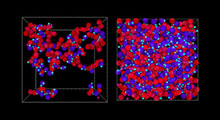
- Cross-Linked Structure of Thermosetting Resin
- It may be possible to use a simplified chemical reaction model to create a complex three
Full Atomistic MD Mechanical / Viscosity / Viscoelasticity Materials Science
-
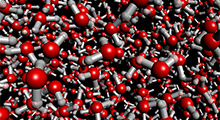
- Evaluation of Relative Permittivity Using MD
- Using the full atomistic model to perform MD calculations, the relative permittivity at a temperature of 300 K has been evaluated
Full Atomistic MD Optical / Electrical / Magnetic Materials Science
-
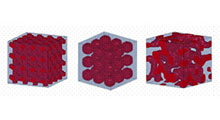
- Nonlinear Mechanical Properties of Composites (Linked with LS-DYNA)
- It is generally said that phase separated structures formed from polymer blends
DPD / Mean FieldContinuum ModelMultiscale Analysis Mechanical / Viscosity / ViscoelasticityInterface / Phase Separation / Particle Dispersion Materials Science
-
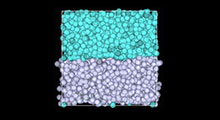
- Evaluation of Interfacial Tension Using DPD
- We used DPD to calculate the interface tension between water and octane. Octane is expressed with 3 particles of DPD, and water
DPD / Mean FieldMultiscale Analysis Interface / Phase Separation / Particle Dispersion Materials ScienceLife Science
-
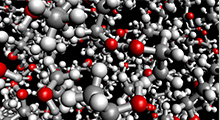
- Evaluation of Solubility Parameters Using MD
- Using the full atomistic model to perform MD calculations, the solubility parameter (SP value, ?A) has been evaluated for water, octane, benzene
Full Atomistic MD Interface / Phase Separation / Particle DispersionMolecular structure / Affinity / Solubility Materials ScienceLife Science
-
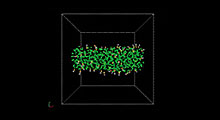
- Shear Deformation of Droplets Using DPD
- After the formation of droplets using two types of DPD particle, surfactant is placed on the interface. After relaxation, we calculated
DPD / Mean Field Interface / Phase Separation / Particle Dispersion Materials Science
-
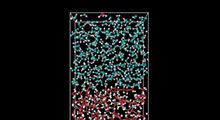
- Evaluation of Interfacial Tension Using MD
- The interface tension of water/octane has been evaluated by performing molecular dynamics (MD) calculations using the full atomistic model.
Full Atomistic MD Interface / Phase Separation / Particle Dispersion Materials ScienceLife Science
-
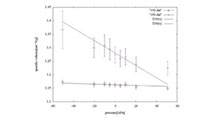
- Bulk Modulus Evaluation
- Mechanical properties (volume elasticity modulus) can be evaluated using the molecular dynamics engine COGNAC.
Full Atomistic MD Mechanical / Viscosity / Viscoelasticity Materials Science
-
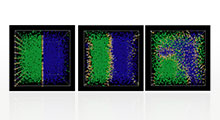
- Effect of Surfactants for Interfacial Tension
- DPD is included in COGNAC. After the formation of an interface using two types of DPD particles, the surfactant is placed on the interface.
DPD / Mean Field Interface / Phase Separation / Particle Dispersion Materials ScienceLife Science
-
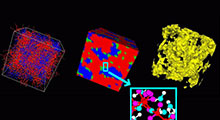
- Analysis of Polyelectrolyte Membrane for Fuel Cell
- Solid polymer fuel cells are expected to be the fuel source for next generation automobiles
Full Atomistic MDDPD / Mean FieldMultiscale Analysis Small molecule penetration / diffusion / adsorptionInterface / Phase Separation / Particle Dispersion Materials Science
-
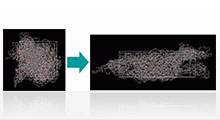
- Uniaxial Elongation Analysis
- Mechanical properties (uniaxial elongation) can be evaluated using the molecular dynamics engine COGNAC. The actual calculation
Full Atomistic MD Mechanical / Viscosity / Viscoelasticity Materials Science
-
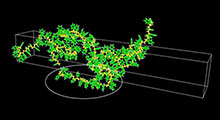
- Optical Properties
- Light can permeate material and excite its electrons to produce an induced electric field. The interaction between the light and
Full Atomistic MD Optical / Electrical / Magnetic Materials Science
-
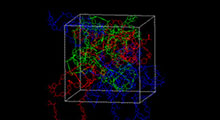
- Glass Transition Temperature Evaluation
- By using the molecular dynamics engine COGNAC, we can evaluate the glass transition temperature Tg of polymers. Specifically, a system is set to
Full Atomistic MD Thermal Materials Science
-
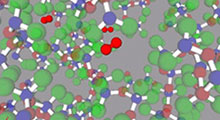
- Gas Diffusion Analysis
- The permeability of small(gas) molecule in polymer matrix is extremely important in the manufacturing of such products as film and
Full Atomistic MD Small molecule penetration / diffusion / adsorption Materials Science
-
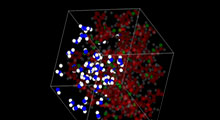
- Gas Permeability Analysis
- It is important to understand and control the gas barrier properties of oxygen, nitrogen, and water for uses in such plastics material as those used in
Full Atomistic MD Small molecule penetration / diffusion / adsorption Materials Science
-
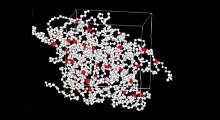
- Properties of Crosslinking Materials
- Deformation simulations for the stress-strain characteristics of rubber molecule models that contain cross linked structures are conducted.
Coarse Grained MD Mechanical / Viscosity / Viscoelasticity Materials Science
-
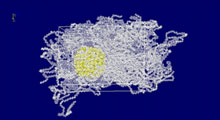
- Nano-Composite Materials
- Polymer nanocomposites are nanometer-sized, superfine particles are dispersed in polymers. Nanocomposites have many practical applications
Coarse Grained MD Mechanical / Viscosity / ViscoelasticityInterface / Phase Separation / Particle Dispersion Materials Science
-
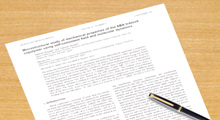
- Publications
- Published papers and proceedings using the OCTA and J-OCTA.
Published Papers and Examples
-
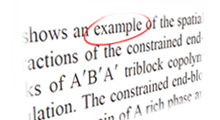
- Examples
- The examples using OCTA, 1999 - 2002.
Published Papers and Examples
Presentations
Introduction materials of J-OCTA (links for external web site)
- Creating Representative Volume Element by LAMMPS for Finite Element Analysis
LAMMPS Workshop (2019) - Integrated simulation system for soft materials
LAMMPS Workshop (2019) - Multi‐scale simulation of soft materials by using LAMMPS and OCTA/J-OCTA
LAMMPS Workshop (2013) - Integrated simulation system for soft materials
NASA Advanced Modeling & Simulation (AMS) Seminar Series (2018)
Case studies of SIESTA (links for external web site)


